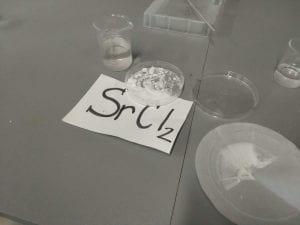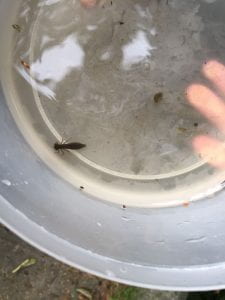Water Filter Challenge
The water filter challenge was a challenge where we got into groups of 4 people and had to achieve the goal of creating a water filter with limited and given materials. We were given a scenario: Each group is a company that filters water and our companies work for the headmaster, Ms. Yorke. She “hired” each group to make a water filter and. We can only succeed in our goal if the water is clean enough so that we can release it into the Pitt River. We were only given these materials: 2L water bottle, cheese cloth, cotton balls, silk, sponges, water filters (coffee filters), variety of carbon, sand and crystal beads.
We first tried putting everything because we thought that the more materials there are, the better it will filter because it has more layers but we were extremely wrong. It didn’t help at all. The first prototype was like this.
For the first prototype, we did very little research like what makes a water filter good, stuff like that but we didn’t go really in depth into the procedure of making a filter with a 2L water bottle and we just chucked materials in without creating layers. But for the second prototype, we did more research before we started to make our new prototype. We researched on how carbon and sand helps filter water and we got some inspiration from other people that made water filters on the internet too. A lot of people used carbon, sand, rocks, small pebbles and a filter on the cap and it was said that they “crystal clear” water. So we decided to put filter paper in between each material so it looked like this.
After the second prototype we collected the dirty water that was filtered and we compared it with normal tap water against the sun and it looked like this.
Looks pretty good right!? This was supposed to be our last one but since we had some spare time the day after, so we did extreme research and we dreamt of how we can make the best and most useable filter ever. We had a pretty weird idea. Since everyone on the internet and even sources say that carbon is very useful, we thought of only using carbon and putting a filter paper on the bottom. But since that idea was pretty wack, we didn’t choose to do it. There weren’t a lot materials left anyway so we couldn’t have done a lot of materials. We thought of having 3-4 layers. First being a cheese cloth so that it can filter all the big stuff such as little sticks and grass. Then we would have carbon and some sand so that it can remove the smell and can filter the water more and then filter paper on the cap to filter more. The third prototype looked like this.
We didn’t have a ton of materials than we had for the first 2 prototypes but we thought that it would be very effective. News Flash! It worked horrible because the smell was still there, the carbon didn’t really help, we didn’t have enough sand so it had no effect and the water was more yellow. Mission failed totally.
So after some group discussions and some votes, we chose to present prototype 2 as our final product. Prototype 2 was the most successful and the quality of the water was very good. Thing is that it takes up a handful of materials which will be disposed after 2 times of filtering because the materials will not be as useful as they did before when we did the first filter. It might not be good for the environment but since it’s for the well-being of the environment and so that the water in the river won’t be as polluted, this risk has to be taken. But since the water in the Pitt River is very clean, this won’t be happening. If we had rocks, it would’ve helped more to filter since it works like carbon so it filters well. We also did some comparisons with quantitative/qualitative aspects.
Everyone in my group worked really well because nobody drifted off and everybody worked really hard to achieve our goal. Everybody was assigned jobs and everyone did their parts and were not late. Nobody got distracted mid-way our work and everyone was inclusive too. I really think that we built a very useful and portable water filter and we think we fulfilled to achieve our goal and our challenge. The part that I think we did very well on is that we thought of is that we decided to put water filters between every different material. The part that is a bit disappointing is that while we were doing research, we learnt that more the carbon there is, the cleaner it gets and the less smell there is. Also, it was also disappointing that we didn’t have rocks/pebbles as our materials. Because while doing research, we saw that a lot of people used rocks as their first layer so that was disappointing. Other than those, we think that we made a real good filter and we think it’ll be useful for future filter jobs.





























